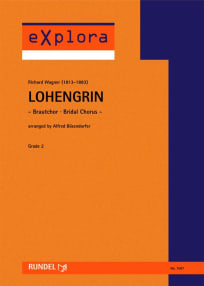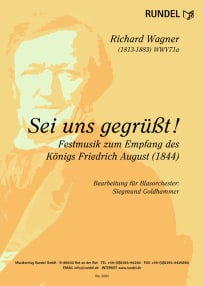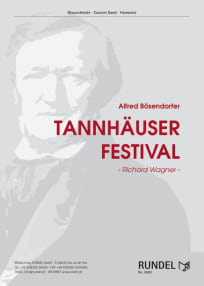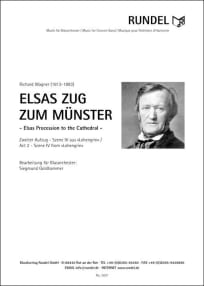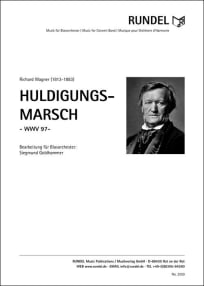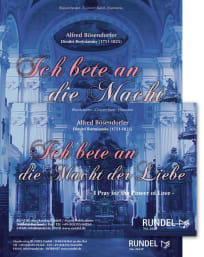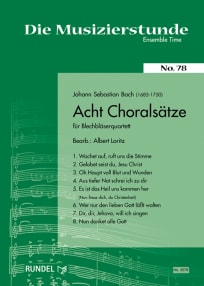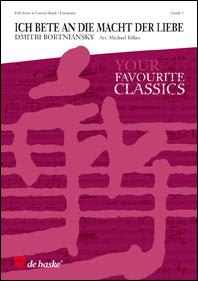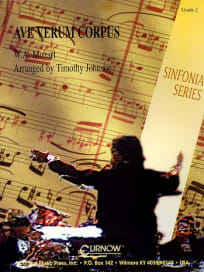Trauermusik (Trauersinfonie) - L10100341 | Music
HomepageMusicTrauermusik (Trauersinfonie) - L10100341Concert Band
Trauermusik (Trauersinfonie)
über Motive aus Carl Maria von Webers "Euryanthe" (WWV 73)
Funeral Music on themes from "Euryanthe"
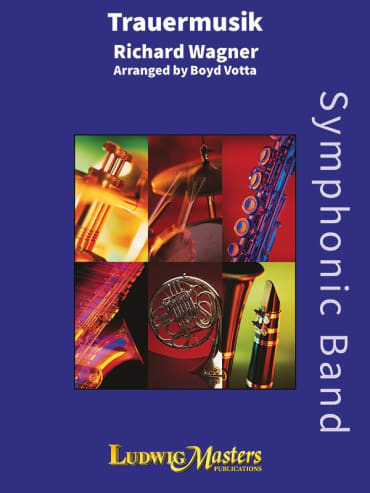
Concert Band
Trauermusik (Trauersinfonie)
über Motive aus Carl Maria von Webers "Euryanthe" (WWV 73)
Funeral Music on themes from "Euryanthe"
Composer
Arranger
Occasion
Performance time
00:07:04
Grade Level
Mittelstufe
Publisher
Ludwig Music
Size
US 9x12 (229x305mm)
Info
Full Score + Parts
Order Number
L10100341
Release Date
2022/ 2020 / 1994
Wishlist
Print
Share
Info
On December 14, 1844, the remains of Carl Maria von Weber were moved from English to German soil. Wagner composed Trauermusik for the torch-light procession to Weber's final resting-place, the Catholic Cemetery in Friedrichstadt.
The subtitle to the work, Funeral Music on Themes of Carl Maria von Weber, and the preface to Leidzen are misleading. Both imply that Wagner borrowed and arranged only on Weber's melodies. Actually, Wagner took both melody and harmony from Weber. Trauermusik is, in fact, Wagner's "band transcription" of Weber's music.
The first part of Trauermusik is an arrangement of music from the overture to Euryanthe (mm. 129-143) which represents the vision of Emma's spirit in the opera. Wagner transposed the music down one-half step to Bb minor and added a dominant-seventh chord to connect the passage to the next section. Wagner also altered Weber's tempo indication, Largo, to "Adagio". Wagner retained Weber's meter signature (4/4), however.
The main section of the work (mm. 17-71) is taken from the cavatina "Hier dicht am Quell" (Near To This Spring) from Act II, scene 2 of the opera. Wagner's choice of this passage may have been influenced by the numerous textual references to death. Wagner transposed this music from G major to Bb major; he also added a repeat marking at the end of this section (returning to the beginning) to allow the work to be used throughout the two-and-one-half mile procession. Most importantly, Wagner also doubled Weber's note values, which calls into question the tempo relationship between this section and the opening.
The "Coda of Trauermusic" is taken from Act II, scene 7 (just before the final chorus)where Count Adolar "falls on his knees before Euryanthe, then rises in prophetic ecstasy at their reunion". Wagner probably chose this passage because it is an altered version of the "vision music" which opens Trauermusik. Wagner transposed this passage from C major to Bb major, adjusted the part-writing, and once again doubled the note values. In addition, he eliminated repeated notes and changed the rhythm of Adolar's melody in Trauermusik's final trumpet passage.
From 1844 until 1926, the only generally known copies of the full score were held by Wagner and a score in the hand of Felix Mottl. The lack of an available full score and parts undoubtedly made performances of the work difficult.
Only one performance of the work between it's premiere and 1926 is known: a concert performance conducted by Johann Siebenkas in October, 1864. The origin and current location of these performance parts are unknown.
The subtitle to the work, Funeral Music on Themes of Carl Maria von Weber, and the preface to Leidzen are misleading. Both imply that Wagner borrowed and arranged only on Weber's melodies. Actually, Wagner took both melody and harmony from Weber. Trauermusik is, in fact, Wagner's "band transcription" of Weber's music.
The first part of Trauermusik is an arrangement of music from the overture to Euryanthe (mm. 129-143) which represents the vision of Emma's spirit in the opera. Wagner transposed the music down one-half step to Bb minor and added a dominant-seventh chord to connect the passage to the next section. Wagner also altered Weber's tempo indication, Largo, to "Adagio". Wagner retained Weber's meter signature (4/4), however.
The main section of the work (mm. 17-71) is taken from the cavatina "Hier dicht am Quell" (Near To This Spring) from Act II, scene 2 of the opera. Wagner's choice of this passage may have been influenced by the numerous textual references to death. Wagner transposed this music from G major to Bb major; he also added a repeat marking at the end of this section (returning to the beginning) to allow the work to be used throughout the two-and-one-half mile procession. Most importantly, Wagner also doubled Weber's note values, which calls into question the tempo relationship between this section and the opening.
The "Coda of Trauermusic" is taken from Act II, scene 7 (just before the final chorus)where Count Adolar "falls on his knees before Euryanthe, then rises in prophetic ecstasy at their reunion". Wagner probably chose this passage because it is an altered version of the "vision music" which opens Trauermusik. Wagner transposed this passage from C major to Bb major, adjusted the part-writing, and once again doubled the note values. In addition, he eliminated repeated notes and changed the rhythm of Adolar's melody in Trauermusik's final trumpet passage.
From 1844 until 1926, the only generally known copies of the full score were held by Wagner and a score in the hand of Felix Mottl. The lack of an available full score and parts undoubtedly made performances of the work difficult.
Only one performance of the work between it's premiere and 1926 is known: a concert performance conducted by Johann Siebenkas in October, 1864. The origin and current location of these performance parts are unknown.


